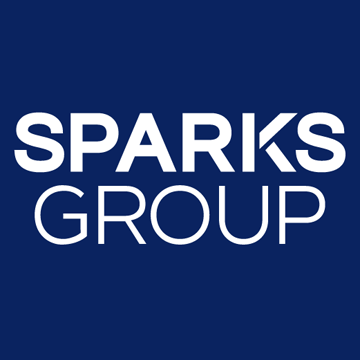
Unconscious bias can seep into almost every stage of the hiring process, potentially discouraging some skilled candidates from applying to open positions and increasing overall employee turnover.
Companies looking to promote diversity, equity, and inclusion within their recruitment efforts and workplace should identify areas where people from unique backgrounds may feel excluded and correct them. The effort is well worth it since there is a great benefit for both employers and employees. Research shows the most diverse companies are better at recruiting top talent, retaining their employees, being more innovative, and earning more revenue than their industry medians.1
Read More: Strategies to Promote Diversity, Equity, and Inclusion in the Workplace and Hiring
Below you will find strategies your company can use to remove unconscious bias from job postings, website pages, the interview process, and company culture.
Removing Unconscious Bias Within Job Postings
Hiring teams should pay close attention to biased language in job postings and across their website because specific words may discourage some candidates from applying. Using exclusionary verbiage or requirements could cause companies to miss out on top applicants. Let’s look at some examples:
Avoid Gender Bias in Job Descriptions
When creating a job posting, avoid words that may be gender-coded, such as words like “strong” and “competitive,” which may resonate best with male candidates. Feminine-coded words to watch out for include “support,” “care,” and “feel.” By using these nouns or adjectives, some candidates may assume the role is meant for the opposite gender and not apply.
There are several websites where you can upload or paste text and get recommendations on gender-neutral alternative phrasing, such as Gender Decoder2, Idealrole.com3, Eploy4, Applied Text Analysis5, and Conscious Style Guide6.
Watch Your Superlatives
Instead of using words like “rockstar” or “superhero” in your job titles, use neutral, descriptive titles like “project manager” or “engineer” instead7. Also minimize the use of superlatives, such as “expert” or “world-class.” Research finds that women are less likely to brag about their accomplishments and are oftentimes more collaborative and less competitive than men.8
Eliminate “Nice-To-Have” Requirements
When crafting job requirements, be sure to only list what the candidate should be expected to do, not every extra bell or whistle. Women are less likely to apply for a position unless they meet every requirement, while men are more likely to apply only satisfying 60 percent of the qualifications.9
Watch Out for College Major Requirements
Educational requirements can also exclude certain genders from applying. Different genders gravitate towards different postsecondary majors, meaning that companies may unknowingly discourage one gender from applying if they aren’t as likely to hold the same degree as the other gender.10
Read More: 4 Strategies to Write Inclusive Job Descriptions
Evaluating Website Page Bias
While job applicants may be most interested in your postings, don’t forget to scan your website copy for potential bias, too. Take note of the word choice discussed above and swap out any exclusionary language for more neutral options.
Bias can also seep into the imagery displayed across your pages. Do the images depict a diverse workplace? Or one that represents all genders fairly? If not, consider updating images to better reflect an inclusive team.
The “About Us” and/or “Careers” pages are places many job applicants will visit to look for company culture information. While job descriptions can include promises about workplace inclusivity, the same message should also be present here. Make sure to detail any company values on this page when it relates to welcoming people from all backgrounds and promoting diversity, so job seekers can recognize that.
This can be a great spot to mention any mentorship programs and any benefits that benefit certain types of employees, such as parental leave. Additionally, company pages on third-party sites such as Glassdoor, Indeed, LinkedIn, and various job boards (CareerBuilder, Monster, Dice, etc.) are also an excellent place to showcase your company’s culture and employment brand.
Avoiding Unconscious Bias in Interviewing
Bias exists during several aspects of the interviewing stage of recruitment. How and where you advertise open positions, how you screen in candidates, and whether you have a diverse hiring team all play a role in the types of candidates you consider. Best practices include:
Standardizing Interview Questions
Interviewers may ask different candidates different questions depending on their educational background, gender, or other factors, which greatly influences how a candidate can demonstrate they are a great fit for the open role.
For example, asking only male candidates questions about leadership or only female candidates about collaboration can severely limit the hiring team’s ability to evaluate applicants compared to each other. If interviewers fail to ask a woman candidate how they would supervise their team members then when it comes to selecting the best person for the job, the hiring team may not have that information to contrast with candidates who were asked how they demonstrate their team management skills.
Unstructured interviews are prone to bias. These types of assessments allow candidates to organically offer information about their experience, rather than having agreed-upon questions for each job seeker. By standardizing the questions the interviewers will ask during the interview, hiring teams can minimize bias and evaluate job seeker responses side by side, such as on a scorecard, to identify top candidates.11
Conducting Blind Resume Comparisons
One effective strategy to minimize bias during the interview process is to conduct blind resume evaluations. During the process, the hiring team removes identifying information and any experience irrelevant to the job requirements to make a fair selection on the most qualified candidates for that position, without considering factors such as gender, race, or educational background.
Studies show that when ethnic minorities remove references to their race, they secured more interviews than when they included identifying information about their backgrounds.12 Hiring teams can remove this information themselves or use blind recruitment tools to do this for them, such as Toggl Hire and Blendoor.13
Offering Work Sample Tests
One strategy to make the interview process fairer for all applicants is to provide them with a work sample test. This type of assessment replicates scenarios and tasks the person would perform on the job, which can be a great way for the candidate to demonstrate their skills and allow the interviewers to be able to evaluate applicants on the same criteria.14
Removing Company Culture Biases
Unconscious bias also plays a role in company culture and how valued new and existing employees feel. Companies looking to promote retention and employee happiness should identify and correct any exclusionary workplace practices.
Look into the following trouble spots for potential bias against your employees:
- Evaluate your company policies and ensure they don’t discriminate against certain groups and/or individuals
- Examine which benefits are affected by potential bias and make adjustments
- Make sure medical conditions, religious beliefs, physical limitations, and other factors are considered when planning company events and activities
Access the Webinar Recording
On December 7th, 2021 our company hosted a webinar titled “Identifying and Correcting Unconscious Bias in Hiring." Learn strategies to:
- Remove unconscious bias from job descriptions and website copy
- Screen, interview, and select candidates more fairly
- Integrate new hires within the company culture
Sources:
- https://www.shrm.org/hr-today/news/hr-magazine/0418/pages/can-blind-hiring-improve-workplace-diversity.aspx
- http://gender-decoder.katmatfield.com/
- https://decoder.idealrole.com/
- https://www.eploy.co.uk/resources/toolbox/check-my-job/
- https://textanalysis.beapplied.com/
- https://consciousstyleguide.com/
- https://www.glassdoor.com/employers/blog/10-ways-remove-gender-bias-job-listings/
- https://www.glassdoor.com/employers/blog/10-ways-remove-gender-bias-job-listings/
- https://www.glassdoor.com/employers/blog/10-ways-remove-gender-bias-job-listings/
- https://www.glassdoor.com/employers/blog/10-ways-remove-gender-bias-job-listings/
- https://www.shrm.org/resourcesandtools/hr-topics/talent-acquisition/pages/7-practical-ways-to-reduce-bias-in-your-hiring-process.aspx
- https://hbswk.hbs.edu/item/minorities-who-whiten-job-resumes-get-more-interviews
- https://toggl.com/blog/blind-recruitment-tools
- https://www.shrm.org/resourcesandtools/hr-topics/talent-acquisition/pages/7-practical-ways-to-reduce-bias-in-your-hiring-process.aspx






